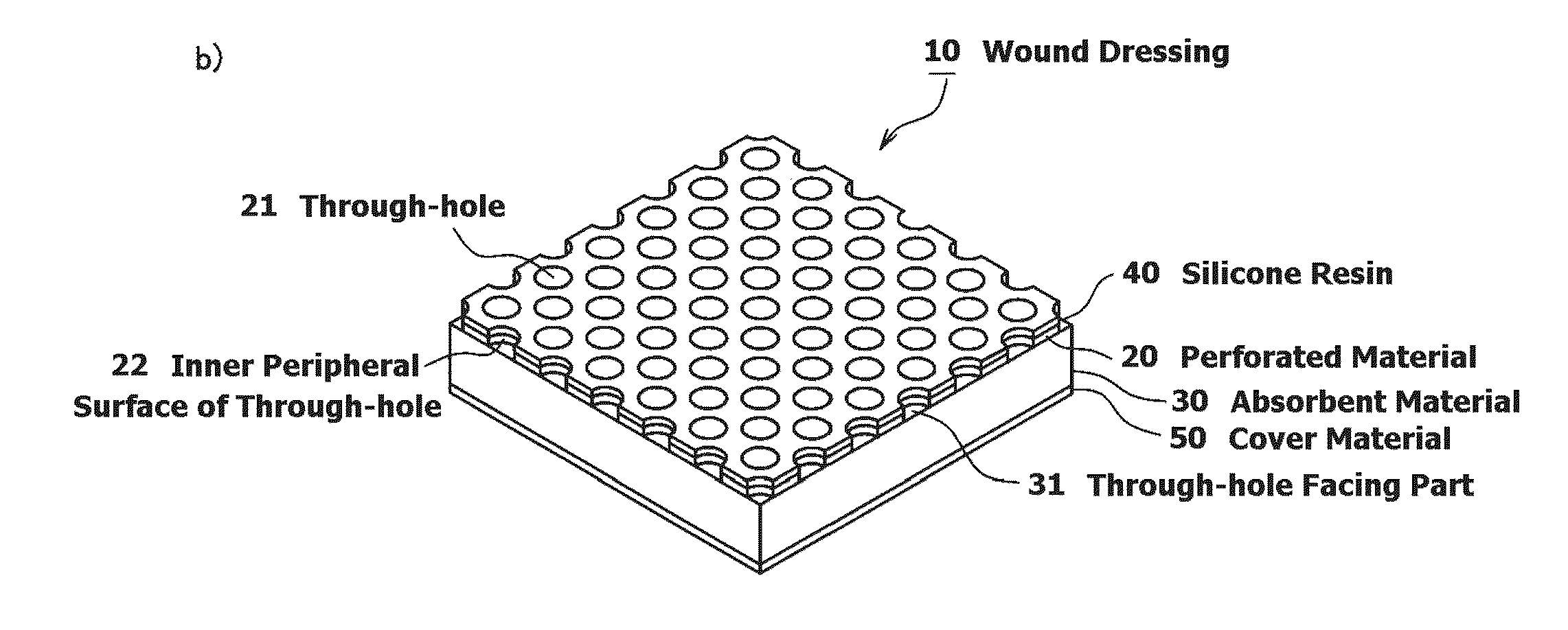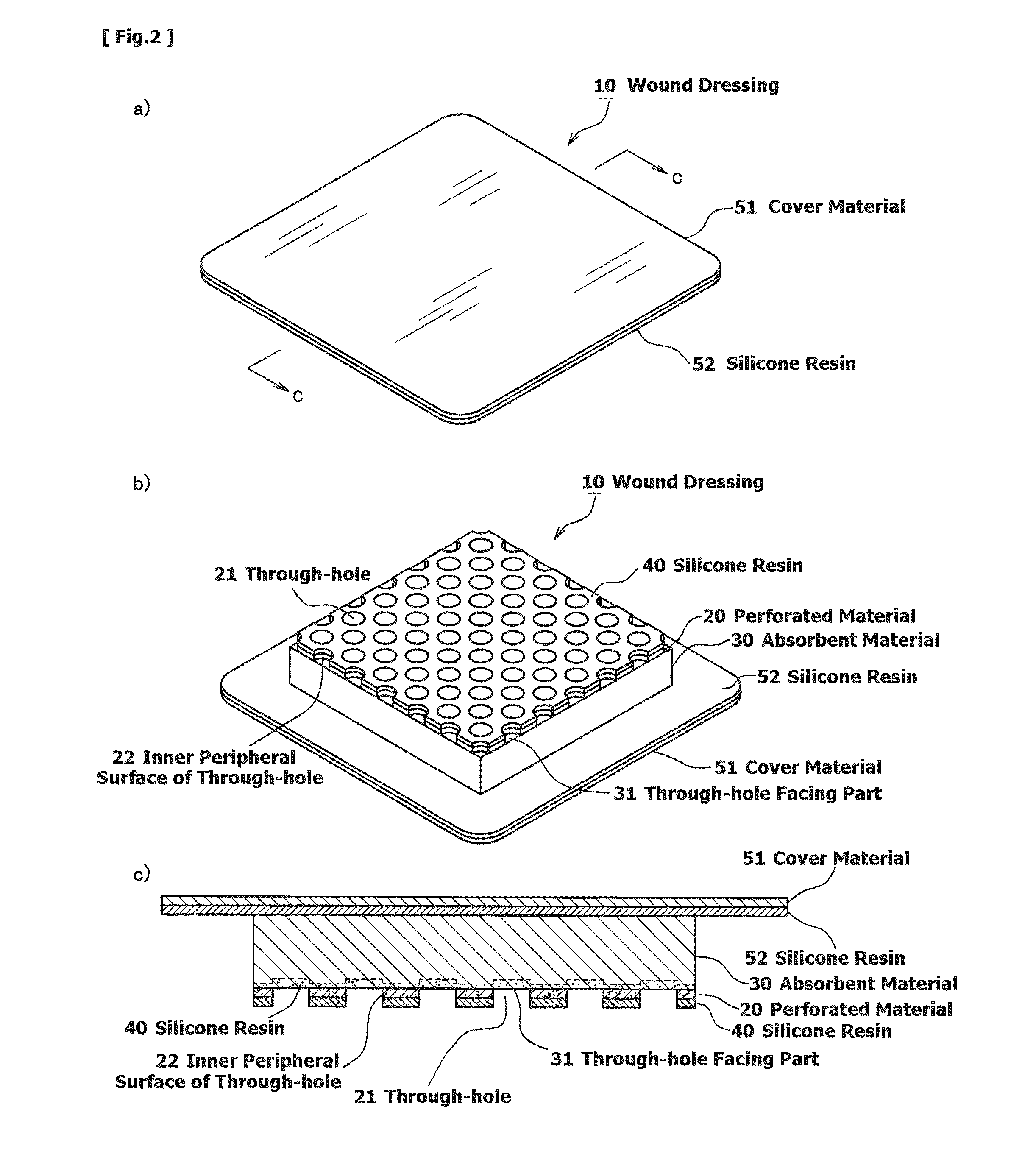Wound dressing and method for producing it
a wound and wound technology, applied in the field of wound dressings, can solve the problems of delayed cure of wounds, no absorbability, pain, bleeding and wound bleeding, etc., and achieve the effects of preventing skin maceration, preventing skin maceration, and preventing skin maceration
- Summary
- Abstract
- Description
- Claims
- Application Information
AI Technical Summary
Benefits of technology
Problems solved by technology
Method used
Image
Examples
example 2
[0124]A wound dressing was produced according to the same method as in Example 1, for which, however, a polyurethane foam was used as the absorbent material. FIG. 7 shows an enlarged view of the thus-obtained wound dressing, taken from the perforated material side thereof. Also as in FIG. 7, it is known that the silicone resin clung and adhered to a part of the polyurethane foam of the absorbent material.
Comparative Example 1
[0125]A wound dressing was produced according to the same method as in Example 1, for which, however, the silicone resin was applied only to the bottom face of the perforated material. Accordingly, in the wound dressing of Comparative Example 1, the part of the absorbent material facing the through-holes of the perforated material is not coated with the silicone resin. FIG. 8 shows an enlarged view of the thus-obtained wound dressing, taken from the perforated material side thereof.
[0126]The test results in Examples and Comparative Example are shown in Table 1.
T...
example 1
Results in Example 1
[0131]On the other hand, the wound dressing in Example 1 did not adhere at all and could be peeled away on day 2. The wound surface from which the wound dressing had been peeled away was not roughened at all. On day 9, the wound dressing adhered lightly at the part of the through-holes of the perforated material, but little bleeding was seen from the wound surface from which the wound dressing had been peeled away. The difference in the constitution between Example 1 and Comparative Example 1 is that the part of the absorbent material facing the through-holes of the perforated material was partly coated with a silicone resin in the former. Accordingly, it has been confirmed that the present invention is effective for solving the problem of adhering of wound dressings to the tunica dartos and the granulation tissue of a wound. The results are shown in FIG. 10.
PUM
| Property | Measurement | Unit |
|---|---|---|
| Area | aaaaa | aaaaa |
| Adhesivity | aaaaa | aaaaa |
Abstract
Description
Claims
Application Information
 Login to View More
Login to View More - R&D
- Intellectual Property
- Life Sciences
- Materials
- Tech Scout
- Unparalleled Data Quality
- Higher Quality Content
- 60% Fewer Hallucinations
Browse by: Latest US Patents, China's latest patents, Technical Efficacy Thesaurus, Application Domain, Technology Topic, Popular Technical Reports.
© 2025 PatSnap. All rights reserved.Legal|Privacy policy|Modern Slavery Act Transparency Statement|Sitemap|About US| Contact US: help@patsnap.com



